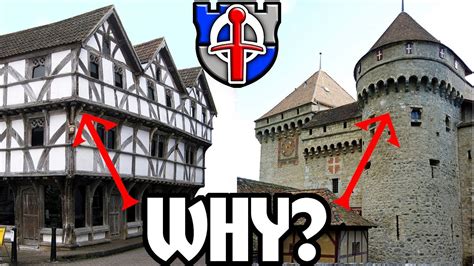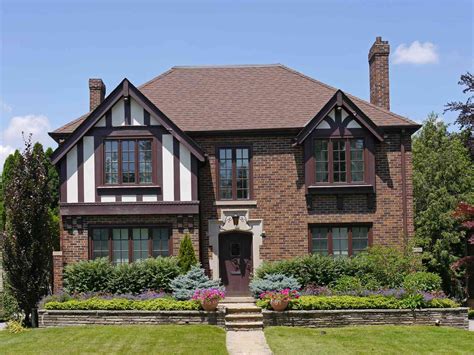tudor architecture Learn about the Tudor style of architecture that was popular in England during the 16th century, under the Tudor monarchs. Discover its characteristics, evolution, decline, and . Cox is one of the fastest internet providers in Las Vegas, offering many high-speed wifi and internet plans. Explore all of our options - from gigabit internet to Internet 500 Mbps with Unlimited Data.
0 · why do tudor houses overhang
1 · tudor style of architecture
2 · tudor revival architecture characteristics
3 · tudor interior design characteristics
4 · tudor architecture wikipedia
5 · tudor architecture interior
6 · pictures of tudor style houses
7 · famous tudor architects
Instructions. Enter expected CR of the creature. Fill in the HP, AC, and other defensive attributes of the creature. Fill in offensives attributes of the creature. DPR is averaged over three rounds! Add any special Monster Features of creature. Be sure to read the Dungeon Master's Guide section on monster creation, pages 273 through 283.
Learn about the Tudor style of British architecture, which combined Renaissance and Gothic elements between 1485 and 1558. Find out how it relates to the Tudor monarchs and their reigns, and see examples of Tudor . Learn about the Tudor style of architecture that was popular in England during the 16th century, under the Tudor monarchs. Discover its characteristics, evolution, decline, and .Learn how Tudor architecture evolved from Gothic to Renaissance styles, from royal palaces to country houses, and from prodigy mansions to modest dwellings. Explore the features, symbols and patterns of Tudor buildings and their .Learn about the origin, evolution, and features of Tudor architecture, a Medieval style that originated in England and spread to America. See examples of Tudor houses, chimneys, .
Discover the origins, evolution, and characteristics of Tudor architecture, a distinctive style that emerged in medieval England and flourished during the Tudor period. See examples of Tudor buildings, from royal palaces to quaint . Learn about the distinctive style of Tudor architecture that flourished in England from the late 15th to the early 17th century. Discover its origins, characteristics, famous .
These historically important and impressive examples of Tudor period architecture provide a glimpse into the architectural diversity and creativity of the era, reflecting the cultural, social, and political influences that shaped medieval .Learn about the history, features, and charm of Tudor architecture, a design genre that originated in medieval England and experienced a revival in the 20th century. Discover the key elements .
why do tudor houses overhang

The Tudor architectural style is the final development of medieval architecture in England and Wales, during the Tudor period (1485 – 1603) and even beyond, and also the tentative introduction of Renaissance architecture to Britain. It followed the Late Gothic Perpendicular style and, gradually, it evolved into an aesthetic more consistent with trends already in motion .Key Terms. Carthusian monastery: The building, or complex of buildings, comprising the domestic quarters and workplace(s) of monastics, whether monks or nuns, and whether living in community or alone (hermits).The monastery .Origins of the Name: The style is named after the Tudor dynasty, which included notable monarchs like Henry VIII and Elizabeth I. However, many features of what we now consider “Tudor” architecture were developed before or after the Tudor period. Gardens and Surroundings: Many traditional Tudor houses feature lush, elaborate gardens, which are a .
Tudor architecture is an interesting blend of Gothic and Renaissance influences. Gothic architecture, which began in the 12th century and dominated European architecture until the 16th century, left its mark on Tudor buildings with its signature vertical lines, pointed arches, large windows, and detailed woodwork. These elements were originally designed for .
History English Tudor Architecture. Tudor architecture was the Medieval architectural style developed in the early part of the Tudor Dynasty in England between the time period of 1485 to 1603. Tudor architecture, a style that flourished in England from the late 15th century to the early 17th century, is one of the most recognizable and beloved architectural styles in British history.Spanning the reigns of the Tudor monarchs (1485-1603), this architectural period left an indelible mark on England’s built landscape, from humble cottages to grand palaces.Tudor and Elizabethan architecture (1485-1603) Comparative peace under the Tudor monarchs brought prosperity to England, Wales and Ireland. The wealth of great landowners - the Crown, the aristocracy and the Church - could be poured into building. It . Learn about Tudor architecture, Tudor style houses, and Tudor revival architecture. Some English Tudor houses are old, others are modern Tudor.
A typical roof pitch, used at our Hilltop English Country project. Characteristic #6: Steep Roofs. On a typical Tudor roof, anything with a pitch less than 13:12 is too shallow.“Tudor architecture is an exquisite blend of medieval and Renaissance influences, a unique expression of grandeur and grace that captures the essence of the Tudor period. These historically significant buildings stand as testaments to the creative genius and cultural richness of the era.” Dr. Lucy Worsley, Chief Curator, Historic Royal Palaces.Tudor architecture is an architectural style that emerged between the 15th and 16th centuries when the Tudor family came into power in Britain.It is a transitional architectural style with an amalgamation of characteristics of Renaissance and Gothic architectural styles. The most prominent feature of a Tudor-style building is the exposed wooden beams and the .
The architecture of early Tudor England displayed continuity rather than change. Churches great and small were built in the Perpendicular Gothic style of the later Middle Ages. Later in the 16th century, however, the great country house came into its own.When someone mentions Tudor architecture, the image that often comes to mind is the black and white timber/ plaster constructions. While this style of building did occur during the reign of the Tudors and earlier, it has been popular enough .The Tudor architectural style is a mediaeval architectural style in England during the Tudor period (1485–1603).. Tudor House, Chester is a good example of a wealthy merchant's house. Tudor House is constructed in sandstone, in brick, and in timber framing with plaster panels. It is roofed in slate.It has four storeys plus a cellar.It is a grade II* listed building on the National .
The forthcoming monograph The Tudor Home (Rizzoli, ) explores how the popular architectural style has evolved in the U.S. Author Kevin D. Murphy, chair of art history at Vanderbilt University .
Hampton Court, Tudor palace in the Greater London borough of Richmond upon Thames.It overlooks the north bank of the River Thames.In the 1520s the palace was given by Thomas Cardinal Wolsey to Henry VIII .
Airs, Malcolm, The Buildings of Britain, A Guide and Gazetteer, Tudor and Jacobean, 1982, Barrie & Jenkins (London), ISBN 0091478316 Girouard, Mark, Life in the English Country House: A Social and Architectural History 1978, .Tudor Architecture Tudor Architecture *Discover the Distinctive Buildings and Characteristics of Tudor Architecture. The middle ages had just ended and a new Tudor dynasty was in power in England with new ideas and new styles of architecture *Tudor period in England 1485 to 1603.. Since the break with Roman Catholic Church took place early in the Tudor era, notable . What is a Tudor-style house? Known for pitched gable roofs, decorative wood trim, and old-world appeal, this architectural style was once a lot more common.
In vernacular architecture, there’s another famous visual style that falls under the Tudor remit – the half-timbered building. This is best known thanks to its modern descendant, the questionably tasteful mock-Tudor style, but it was a popular way of building throughout the era, replacing wattle-and-daub structures among those who could afford it.Characteristics of Tudor Style Houses. Tudor Homes Today: A Guide for Architecture Enthusiasts. 1. Steep Gable Roofs. One of the most visually striking features of Tudor architecture is the steeply pitched gable roof, which is both functional and aesthetically appealing.. Functionality: Steep roofs prevent water buildup by allowing rain and snow to slide .
tudor style of architecture
Tudor Architecture in the United States. Features of Tudor Architecture: Half-Timbered Facades: One of the most distinctive features of Tudor architecture is the use of exposed wooden framework, known as half-timbering. These timbered elements often form intricate patterns, creating a striking contrast against the stucco or brick infill.
Tudor architecture, prominent during the Tudor dynasty in England (1485-1603), is characterized by its steeply pitched gable roofs, half-timbering, and tall, narrow windows with small panes. The original English Tudor started in England during the 15 th century when the British monarchs were reigning in the country. The original English Tudor house was built for the wealthy but it wasn’t until a few decades later that the commoners adopted a more modest version of Tudor architecture. The same building technique, i.e. the half-timbers, were visible .Learn about the Tudor architectural style of homes including history, characteristics, materials, roofing style, windows, and entrance characteristics!
Tudor architecture originated in England during the Tudor era between 1485 and 1558. Tudor architecture combined styles of Gothic and Renaissance architecture. Tudor architecture was developed .The Tudor architectural style is the final development of medieval architecture in England and Wales, during the Tudor period (1485–1603) and even beyond, and also the tentative introduction of Renaissance architecture to Britain. It followed the Late Gothic Perpendicular style and, gradually, it evolved into an aesthetic more consistent with trends already in motion on the .

versace damenuhr
tudor revival architecture characteristics
Cowgirls Espresso | I’m Vanilla. Latte ️🔥 with Aleja all day today💋 Serving looks and coffee☕️ | Instagram. 150 likes, 2 comments - cowgirlsespresso_og on March 31, 2024: "I’m Vanilla. Latte ️🔥 with Aleja all day today💋 Serving looks and coffee☕️ ".
tudor architecture|tudor style of architecture

























